- News
- Reviews
- Bikes
- Accessories
- Accessories - misc
- Computer mounts
- Bags
- Bar ends
- Bike bags & cases
- Bottle cages
- Bottles
- Cameras
- Car racks
- Child seats
- Computers
- Glasses
- GPS units
- Helmets
- Lights - front
- Lights - rear
- Lights - sets
- Locks
- Mirrors
- Mudguards
- Racks
- Pumps & CO2 inflators
- Puncture kits
- Reflectives
- Smart watches
- Stands and racks
- Trailers
- Clothing
- Components
- Bar tape & grips
- Bottom brackets
- Brake & gear cables
- Brake & STI levers
- Brake pads & spares
- Brakes
- Cassettes & freewheels
- Chains
- Chainsets & chainrings
- Derailleurs - front
- Derailleurs - rear
- Forks
- Gear levers & shifters
- Groupsets
- Handlebars & extensions
- Headsets
- Hubs
- Inner tubes
- Pedals
- Quick releases & skewers
- Saddles
- Seatposts
- Stems
- Wheels
- Tyres
- Health, fitness and nutrition
- Tools and workshop
- Miscellaneous
- Cross country mountain bikes
- Tubeless valves
- Buyers Guides
- Features
- Forum
- Recommends
- Podcast
review
£3,199.99
VERDICT:
Excellent all round road bike that delivers on performance and comfort, while being amazing value for money
Excellent ride quality
Great stiffness
Rival groupset has large spread of gears
Bar tape is quite thin
Weight:
7,770g
Contact:
This product has been selected to feature in road.cc recommends. That means it's not just scored well, but we think it stands out as special. Go to road.cc recommends
At road.cc every product is thoroughly tested for as long as it takes to get a proper insight into how well it works. Our reviewers are experienced cyclists that we trust to be objective. While we strive to ensure that opinions expressed are backed up by facts, reviews are by their nature an informed opinion, not a definitive verdict. We don't intentionally try to break anything (except locks) but we do try to look for weak points in any design. The overall score is not just an average of the other scores: it reflects both a product's function and value – with value determined by how a product compares with items of similar spec, quality, and price.
What the road.cc scores meanGood scores are more common than bad, because fortunately good products are more common than bad.
- Exceptional
- Excellent
- Very Good
- Good
- Quite good
- Average
- Not so good
- Poor
- Bad
- Appalling
The Vitesse EVO CR eTap AXS Rival is an absolute belter of a bike! Vitus says the new frame is stiffer yet lighter, and the geometry puts you in the right position to ride fast and hard – whether you're a racer or just like to pelt around the lanes. A full wireless eTap groupset at this price is hugely impressive, too.
Vitus has updated quite a few of its bikes for 2021, and straight off the back of reviewing the excellent ZX-1 EVO I've managed to get my hands on this new Vitesse EVO.
Vitus says it's refined the geometry – Race-Fit, they're calling it – and that means a longer top tube, a lower front end and shorter chainstays than the previous model. All this, for me anyway, allows for a low-slung aero position that just feels a little more urgent and aggressive than the old one.
The Vitesse EVO is a proper race bike. Stiffness levels are impressive for a start, thanks to oversize tube shapes and a full-width bottom bracket shell due to the BB386 standard.
Putting the bearings inside of the frame means the actual bottom bracket shell can be wider than with outboard bearings, without affecting the q-factor – the distance between the crank arms.
This means the down tube, seat tube and chainstays can all be larger in diameter where they join it too, for extra stiffness.
That – plus the fact this medium model weighs just 7.77kg on the road.cc scales of truth – means that, when you unleash the power through the pedals, the Vitesse absolutely flies. It makes full use of all of your energy.
Out of the saddle sprints are blisteringly fast, and as you rock the bike from side to side for full effect there isn't the slightest whiff of any flex anywhere. It's the same on the climbs too. Whether it's a short power climb or a long drag, the Vitus feels stiff and responsive.
From the saddle things are great as well. With a 73.4° seat angle you can adopt a more forward, aggressive position when seated to really drive the power out, and thanks to the short head tube, I could get a low-slung position whether on the hoods or drops – even with 15mm of spacers underneath the stem.
When descending I found this long and low position very beneficial. My centre of gravity felt spot on, and the quickness of the Vitesse EVO's handling means it responds very well to tiny shifts in body weight and tiny modifications to the steering.
On technical downhills with differing cambers, tightnesses and surface qualities I found the Vitus very planted. Thanks to great feedback from the frameset, I had the confidence just to let the Vitesse go.
Fast but calm
The way it responds to those little tweaks from the rider means that, if you are caught out by something as you exit a bend and have to react quickly, it keeps you unfazed by feeling so stable.
The steering is quick without being over the top on the twitchiness scale, which adds to the fun; I'd say the whole bike feels livelier thanks to the short wheelbase, which gives the new Vitesse a nimble feel.
With all of this stiffness and sharp handling, you might be under the impression that the flat, rolling sections between climbs and descents might be a bit of a chore. But this why I love the Vitesse EVO – it can go from adrenaline-fuelled race machine to competent cruiser without any feeling of compromise.
The ride is firm without tipping into harsh, and on longer routes I found it to be a comfortable mile-muncher.
Frame and fork
The UCI-approved frame is constructed as a true one-piece monocoque, says Vitus, and manufactured as a single piece of uni-directional carbon fibre.
With no joins and a refined carbon layup, Vitus claims (you know where this is going) a 34% increase in stiffness alongside a 10% drop in weight over the previous model.
Now, I rode the old Vitesse EVO just last year and it was no slouch, but this new version does feel a more complete rider's package. It's very stiff, like I said earlier, yet maintains a great ride quality.
Slippery shapes
If ultimate speed is your thing, you'll probably be better off with the VX-1 EVO, but that's not to say the Vitesse has missed out on the aero treatment.
There's no mention of wind tunnels, but areas like where the frame and fork meet offer a smooth transition, while the head tube blends the top tube and down tube together nicely.
There is no seatclamp – externally anyway. Instead there's a wedge design hidden inside the seat tube to give a clean look. Plus, if you have a non-wireless geared version of the Vitesse, all cables and hoses are run internally.
Vitus has also gone with dropped seatstays, often touted as a way to improve aerodynamics, although any gains will be minimal. Their slender profile no doubt improves the comfort though, through the small amount of flex it allows. In contrast, the chainstays are all about power delivery, and very chunky.
The tyre clearance is up for the new EVO to 30mm, with Vitus saying that 32mm is possible – it depends on your wheel and tyre combo.
Moving to the front, the SL UD carbon fork delivers stiffness and comfort to the same level as the frame. Push the EVO hard into a bend and there is no flex-induced understeer, and no chatter either under heavy braking or steering loads.
Geometry and sizing
Six sizes are available, which is a good amount considering the costs of moulds for the carbon fibre manufacture. The XS comes with a 523.9mm effective top tube length, while the largest – the XXL – stretches that out to 587.7mm. Full geometry details can be found on Vitus' website, but I'll give you a few numbers for this medium model.
> road.cc Road Bike of the Year 2020/21
The top tube length of 550.9mm mates well with a 145mm head tube and 490mm seat tube. The chainstays are 410mm, while front centre is 591mm. This leads to a nippy, sub-metre wheelbase at 991mm.
As for angles, the seat is 73.4° while the head sits at 72.4°. For the stack and reach figures you are looking at 547mm and 387mm respectively.
Groupset
This Vitesse EVO model is sporting the new wireless Rival eTap AXS groupset from SRAM. If you haven't had the pleasure of using it, I'll take you through its incredibly simple operation. Just like SRAM's mechanical systems, eTap uses just a single paddle on each lever, but unlike with the mechanical shifter its DoubleTap formula isn't going to work with an electronic button.
Now this is the genius bit: press the right-hand shifter button and the chain drops down the cassette. Push the left-hand shifter button and the chain skips back up the sprockets. Want to switch chainrings? Just press them both together. It's so simple and just a joy to use.
Mat recently did a full ride review of the groupset so I won't go into masses of details here, as you can head over and read that in a bit.
What I will say is that I've used the (next level up) Force eTap groupset on loads of bikes, and this Rival version doesn't feel any different. Indeed, it uses the same internals. Compared to Shimano Di2 shifting is different – no better, no worse in my eyes – and it's great to see the technology trickle down to lower level groupsets.
Another great thing about the eTap groupsets is that they are 12-speed and offer some of the most usable gear ratios on the market. The chainset here is a 48/35t, and paired to a 10-33t cassette.
If you're the type of rider (like me) who pedals on the downhills for maximum speed, you aren't going to be let down by the 48-10T combination. Riding the previous Vitesse with eTap Force fitted, I was still pushing that gear at 57mph when slipstreaming an HGV.
Low and slow
At the other end, a 35-33T combo gives a decently low gear if you're spending the day riding in the hills. The only compromise is that the jumps at the top end of the cassette can be a bit gappy, but as you'll likely be using them as bailout gears when climbing, it's not a big issue.
The closer jumps between ratios in the bottom half of the cassette mean you can maintain a tight cadence when riding on the flat.
One concern when it comes to a full electronic system is how is it going to cope with the weather. And that's not a problem, it would seem. Now, I wouldn't expect SRAM to release a groupset that can't cope with a bit of rain, but this setup certainly got a proper test.
On the ride back from the office after picking up the EVO I was treated to one of the heaviest and hardest hailstorms I've ever been caught in. The roads were a blanket of white with stones so big I had red marks all over my upper body for 24hrs! Inevitably those roads soon turned into rivers, yet the Rival groupset just got on with the job, and has done ever since too.
Finishing kit
As for the rest of the bits and bobs, it's quality stuff. Some bikes at this price are rocking carbon stem/handlebar combos, but when you are getting a top notch wireless groupset I guess some compromises have to be made elsewhere.
> 13 of the best cycling drop handlebars — how to buy the perfect bars
What you are getting though is a lightweight alloy Prime Doyenne stem and Doyenne handlebar. It looks classy with its gloss black finish and black-on-black logos. Both components offer plenty of stiffness, and I like the shape of the handlebar with its shallow drop.
If I'm perfectly honest, I'd like some thicker bar tape than the Vitus SuperGrip fitted, but then I don't wear gloves. If you do, you'll probably fine with it.
The carbon fibre seatpost is Vitus branded and does the job. Plus, unlike a lot of integrated seatposts, this one isn't designed to be a specific shape to fit the frame. It's round and has a 27.2mm diameter, which means you can upgrade to a different brand should you wish.
The Vitus Race Performance saddle is slender – ideal for fast riding – and I got on with it pretty well. There is a cutout for reducing numbness, and the padding isn't too thick or soft, which worked for me throughout the test period.
Wheels and tyres
Fitted to this Vitesse EVO is a set of Attaquer wheels, Prime's top-end alloy road wheels. With a claimed weight of just 1,425g they are well suited to riding in the hills, but the main thing I was really impressed with is how stiff they are.
I'm not exactly a light rider and I can chuck out a decent amount of power, so I was very impressed that I could feel no flex from these wheels, even during hard efforts.
Flex is less noticeable on disc wheels anyway as there's no brake pad for the rims to touch against, but on a frame as stiff as this, if there is lateral flex in the wheels, you'll notice it.
As I've said with regards to the gearing, this bike has seen some rubbish weather and the hubs have shown no ill effects. It is obviously difficult to judge long term durability in a six-week test, though.
At 30mm deep the rims don't give a huge aero advantage, and at 17mm wide internally they are well suited to the 25mm Schwalbe ONE Performance tyres that come as standard. And these are some great tyres; quick rolling with loads of grip in the corners. Durability is pretty good for such a tacky tyre, too, and I didn't have any issues with punctures either.
The wheel and tyre set up is tubeless-ready, as are the valves, so all you need to switch from tubes to tubeless is some sealant.
Value
At £3,199.99 this Vitesse EVO is excellent value for money, in my opinion. In fact, the whole range starts with a Shimano 105 groupset and finishing kit (and a slightly cheaper wheelset) for just £1,999.99! Or how about the mechanical Ultegra option with Reynolds AR 29 carbon wheels for just £2,999.99?
I really enjoyed riding the BMC Teammachine SLR Two a little while back, and I'd say it's a similar machine to the Vitus. With an Ultegra Di2 groupset but aluminium wheels and finishing kit, it'll set you back a cool £4,500.
Cannondale's SuperSix Evo in a Rival eTap option does get a carbon cockpit, but with alloy DT Swiss R470 wheels the build will again cost you £4,500.
It's obviously a popular price point as the Specialized Aethos that Liam was such a massive fan of will also set you back £4,500 with a similar finishing kit to the Vitus and DT Swiss R470 wheels.
Looking at Canyon – with its similar direct-to-consumer model (Vitus is owned by Wiggle/Chain Reaction and sold through its online stores) – there aren't any Rival eTap models in the similar Ultimate range.
There is the CF SL 8 Disc Di2 model though, which comes with Ultegra Di2 and alloy DT Swiss P 1800 wheels for £3,799.99. The similarly-equipped Vitesse EVO (but with DT Swiss AR 29 carbon wheels) is £3,699.99. The Canyon does get a carbon fibre handlebar/stem, though.
Conclusion
What a bike. There's not much more to say – it's as simple as that. I'm not even saying it's a great bike for the money; it's just a great bike, and the fact you are getting all of this for a (relatively) good price is brilliant.
If you want a versatile all-round race bike (as in non-aero) then the Vitesse EVO range really needs to be on your list. It rides awesomely, feeling comfortable yet stiff with excellent handling and general behaviour. I would put my own money down on this bike in a heartbeat, and I recommend you do the same.
Verdict
Excellent all round road bike that delivers on performance and comfort, while being amazing value for money
road.cc test report
Make and model: Vitus Vitesse EVO CR eTap AXS
Size tested: Medium
About the bike
List the components used to build up the bike.
CHAINSET: SRAM RIVAL D1 DUB, 48/35T
TYRES: Schwalbe ONE Performance, 700c x 25, Tubeless Ready TLE, Race Guard
BOTTOM BRACKET: SRAM DUB BB386EVO
FRONT DERAILLEUR: SRAM RIVAL eTap AXS
BRAKES: SRAM RIVAL eTap AXS D1 Hydraulic Disc, Flat Mount
REAR DERAILLEUR: SRAM RIVAL eTap AXS, 12 Speed, Short Cage,
BRAKE ROTORS: SRAM Paceline, Front:160mm, Rear:140mm
SHIFTERS :SRAM RIVAL eTap AXS
HANDLEBAR: Prime Doyenne Aluminium, 6061 Aluminium, 78mm Reach, 125mm Drop
STEM: Prime Doyenne Lightweight Aluminium
CASSETTE: SRAM Red 10-33T
HEADSET: ACROS Aix-Low R3, Sealed Bearings, OD46, 1 1/8in – 1 in, 41.8 / 28.6 – 52 / 40
CHAIN: SRAM RIVAL D1
GRIPS: VITUS SuperGrip, Anti Slip
SADDLE: VITUS Race Performance, CRN-Ti Rail, Pressure Relief Channel
SEATPOST: VITUS Carbon, 27.2mm, 15mm Offset
SEATCLAMP: Vitesse EVO Integrated Internal Wedge System
WHEELSET: Prime Attaquer Road Disc
Tell us what the bike is for and who it's aimed at. What do the manufacturers say about it? How does that compare to your own feelings about the bike?
Vitus say, "An evolution. The new Vitus Vitesse EVO features a ground up rethink on what's required from an elite level lightweight race bike. Refined Race-Fit geometry including a longer top tube, lower front end and shorter chain stays gives the perfect balance of fit and control, whatever the race demands. A refined carbon layup result in Vitus' lightest and stiffest road frameset ever - 10% lighter and 34% stiffer than it's predecessor. Build in the increased tyre clearances and modern look, and this bike just wants to be ridden hard."
This bike very much likes to be ridden hard thanks to an incredibly stiff frame and fork, but also manages to deliver on the comfort front.
Where does this model sit in the range? Tell us briefly about the cheaper options and the more expensive options
There are six models in the range. Two below this version – the 105 at £1,999.99 and the Ultegra at £2,999.99 – and then above it sit an Ultegra Di2 (£3,699.99), the eTap Force (£3,749.99) and the eTap Red at £4,799.99.
Frame and fork
Overall rating for frame and fork
9/10
Tell us about the build quality and finish of the frame and fork?
The quality is excellent and I'm a big fan of this blue paintjob.
Tell us about the materials used in the frame and fork?
Both the frame and fork use uni-directional carbon fibre in their construction.
Tell us about the geometry of the frame and fork?
I've touched on the geometry in the full review, but basically it's quite long and low to suit those racing aspirations.
How was the bike in terms of height and reach? How did it compare to other bikes of the same stated size?
The stack for this medium model is 547mm, while the reach is 387mm. That's pretty typical for a race bike of this size.
Riding the bike
Was the bike comfortable to ride? Tell us how you felt about the ride quality.
Overall comfort is very good for such a firm, stiff frame.
Did the bike feel stiff in the right places? Did any part of the bike feel too stiff or too flexible?
Stiffness is very impressive, especially around the bottom bracket and lower half of the frame.
How did the bike transfer power? Did it feel efficient?
Power transfer is helped massively by all of that stiffness.
Was there any toe-clip overlap with the front wheel? If so was it a problem?
No.
How would you describe the steering? Was it lively neutral or unresponsive? On the quick side of neutral.
Tell us some more about the handling. How did the bike feel overall? Did it do particular things well or badly?
The handling is fast, but not overly so, which allows you to ride hard into technical bends without the front end feeling twitchy.
Which components had the most effect (good or bad) on the bike's comfort? would you recommend any changes?
It needs thicker bar tape, especially if you don't wear gloves.
Which components had the most effect (good or bad) on the bike's stiffness? would you recommend any changes?
All the components deliver great stiffness to match the frame and fork. Wheel stiffness is impressive considering how light they are.
Which components had the most effect (good or bad) on the bike's efficiency? would you recommend any changes?
SRAM's 12-speed groupsets give a great spread of gear ratios, which I find hugely efficient.
Rate the bike for efficiency of power transfer:
9/10
Rate the bike for acceleration:
9/10
Rate the bike for sprinting:
9/10
Rate the bike for high speed stability:
10/10
Rate the bike for cruising speed stability:
9/10
Rate the bike for low speed stability:
9/10
Rate the bike for flat cornering:
9/10
Rate the bike for cornering on descents:
10/10
Rate the bike for climbing:
8/10
The drivetrain
Rate the drivetrain for performance:
9/10
Rate the drivetrain for durability:
8/10
Rate the drivetrain for weight:
5/10
Rate the drivetrain for value:
8/10
Tell us some more about the drivetrain. Anything you particularly did or didn't like? Any components which didn't work well together?
The eTap Rival groupset works excellently, and it's great to see the wireless technology come down to cheaper groupsets.
Wheels and tyres
Rate the wheels for performance:
8/10
Rate the wheels for durability:
7/10
Rate the wheels for weight:
9/10
Rate the wheels for comfort:
8/10
Rate the wheels for value:
6/10
Tell us some more about the wheels.Did they work well in the conditions you encountered? Would you change the wheels? If so what for?
Some might expect carbon at this price point, but these lightweight alloy wheels don't detract from what the excellent frameset is up to.
Rate the tyres for performance:
8/10
Rate the tyres for durability:
7/10
Rate the tyres for weight:
7/10
Rate the tyres for comfort:
8/10
Rate the tyres for value:
5/10
Tell us some more about the tyres. Did they work well in the conditions you encountered? Would you change the tyres? If so what for?
Great tyres to get as standard, plenty of grip and fast rolling.
Controls
Rate the controls for performance:
7/10
Rate the controls for durability:
8/10
Rate the controls for weight:
7/10
Rate the controls for comfort:
7/10
Rate the controls for value:
7/10
Tell us some more about the controls. Any particularly good or bad components? How would the controls work for larger or smaller riders?
There is nothing exactly outstanding when it comes to the controls, but they all do a good job. Stem length, handlebar width and seatpost length are all specced in relation to the size of frame.
Your summary
Did you enjoy riding the bike? Yes
Would you consider buying the bike? Yes
Would you recommend the bike to a friend? Yes
How does the price compare to that of similar bikes in the market, including ones recently tested on road.cc?
As you can see from the value section in the review, the Vitesse EVO is very well priced considering how good it is, plus the kit level against rivals from brands such as Specialized, Cannondale and Canyon.
Rate the bike overall for performance:
9/10
Rate the bike overall for value:
7/10
Use this box to explain your overall score
The Vitesse EVO is very hard to find fault with. The ride quality is great and you certainly can't knock the performance, plus compared to its rivals it's very good value for money.
About the tester
Age: 42
I usually ride: This month's test bike My best bike is: B'Twin Ultra CF draped in the latest bling test components
I've been riding for: Over 20 years I ride: Every day I would class myself as: Expert
I regularly do the following types of riding: time trialling, commuting, club rides, sportives, fixed/singlespeed,
Since writing his first bike review for road.cc back in early 2009 senior product reviewer Stu has tested more than a thousand pieces of kit, and hundreds of bikes.
With an HND in mechanical engineering and previous roles as a CNC programmer/machinist, draughtsman and development engineer (working in new product design) Stu understands what it takes to bring a product to market. A mix of that knowledge combined with his love of road and gravel cycling puts him in the ideal position to put the latest kit through its paces.
He first made the switch to road cycling in 1999, primarily for fitness, but it didn’t take long for his competitive side to take over which led to around ten years as a time triallist and some pretty decent results. These days though riding is more about escapism, keeping the weight off and just enjoying the fact that he gets to ride the latest technology as part of his day job.
Latest Comments
- Hirsute 8 hours 7 min ago
This can work - might need longer bolts. https://www.sjscycles.co.uk/lighting-spares/madison-universal-light-moun...
- Bungle_52 10 hours 45 min ago
This was a failure to give way at a roundabout so although it was relatively straightforward to anticipate and avoid there is traffic law to...
- chrisonabike 10 hours 52 min ago
Ah - I have now read Wikipedia on loons, and perhaps I can understand their objections:...
- wtjs 12 hours 5 min ago
she questioned what Police Scotland is doing to "deter dangerous driving and protect cyclists"...
- wtjs 12 hours 15 min ago
I've got a few reports coming up to one year where I've been told that they will take action but I don't know what action yet. I'll let you know...
- chrisonabike 12 hours 27 min ago
I feel Flintshire Lad's response - "A LABOUR councillor (candidate)!"...
- Sredlums 14 hours 7 min ago
Haha, that my pet peeve....
- stonojnr 14 hours 47 min ago
I'm not sure the UCI worlds are on the protected sports list, as surely CX & MTB would be shown too, the Beeb probably just acquire it as part...
- bikeman01 15 hours 27 min ago
Re-deployed on Twitter duty?













































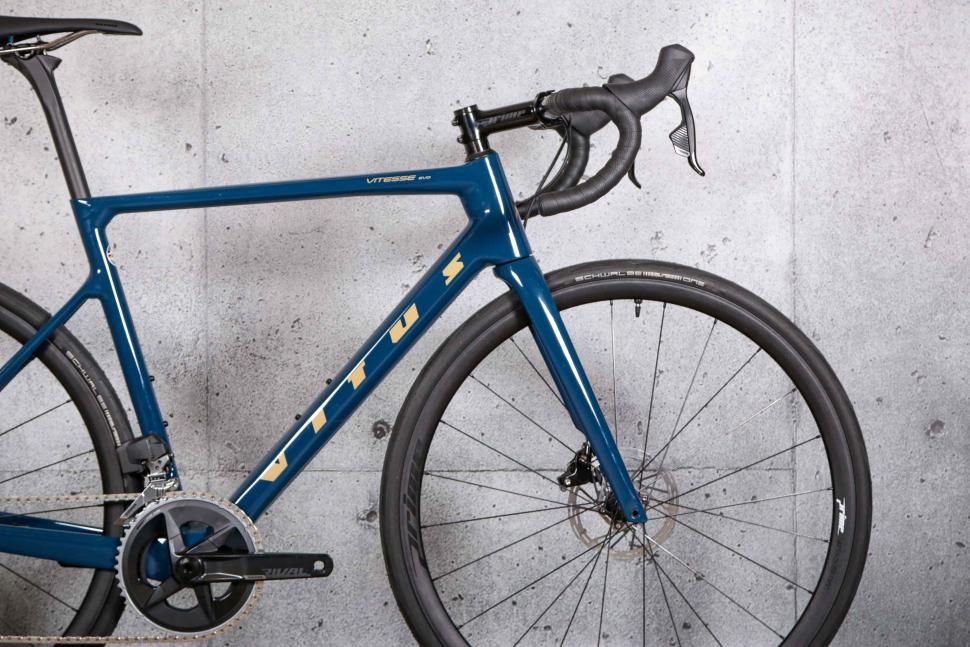
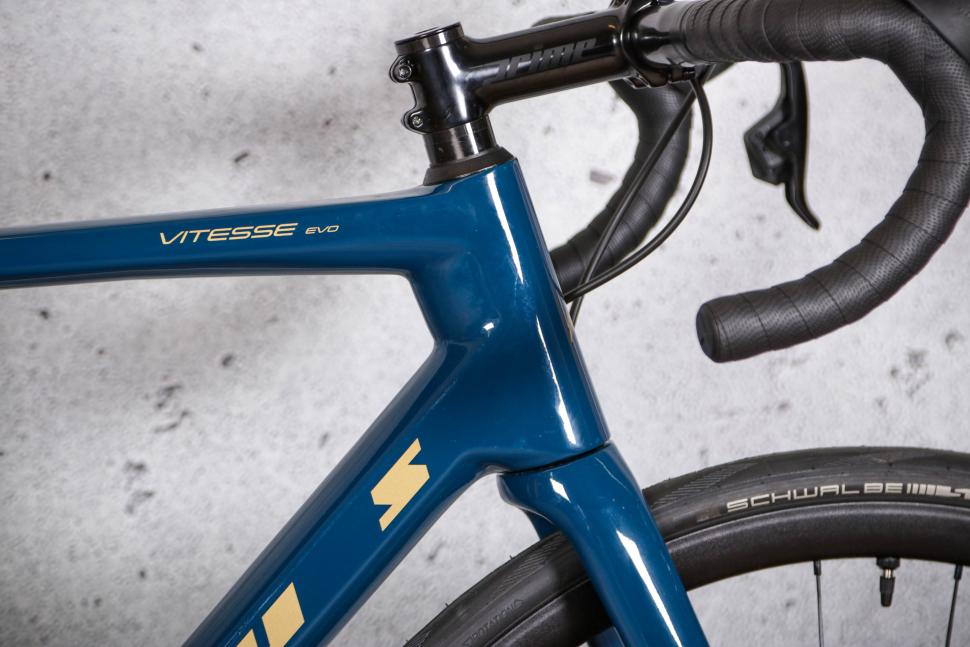
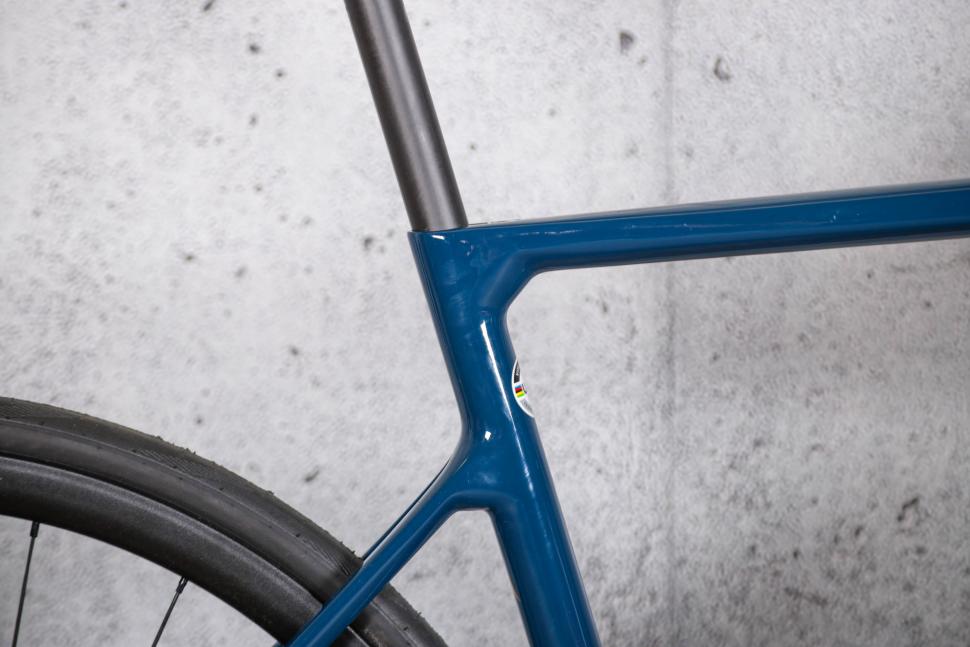



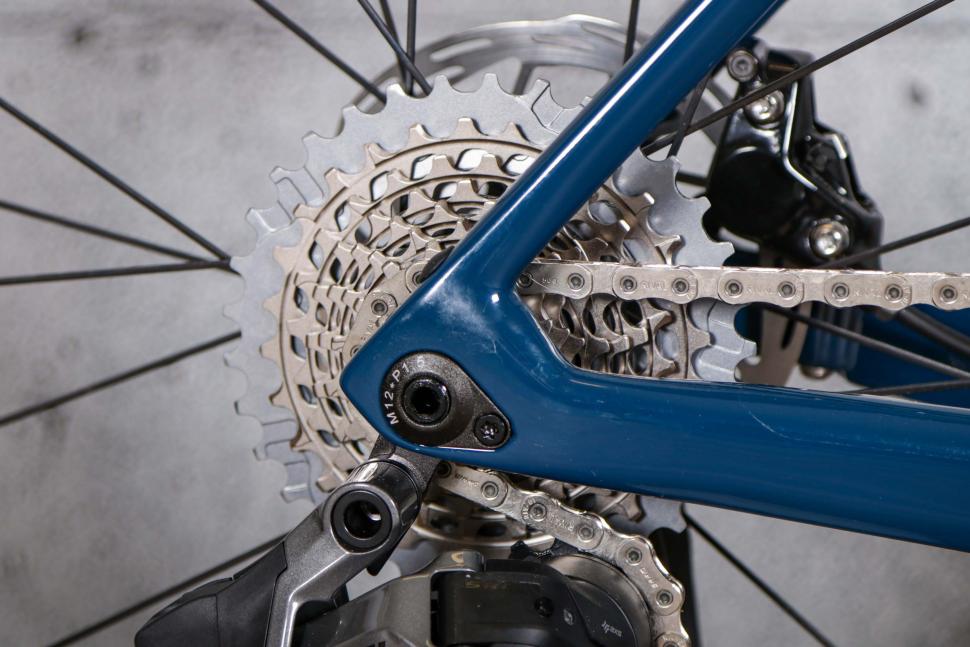


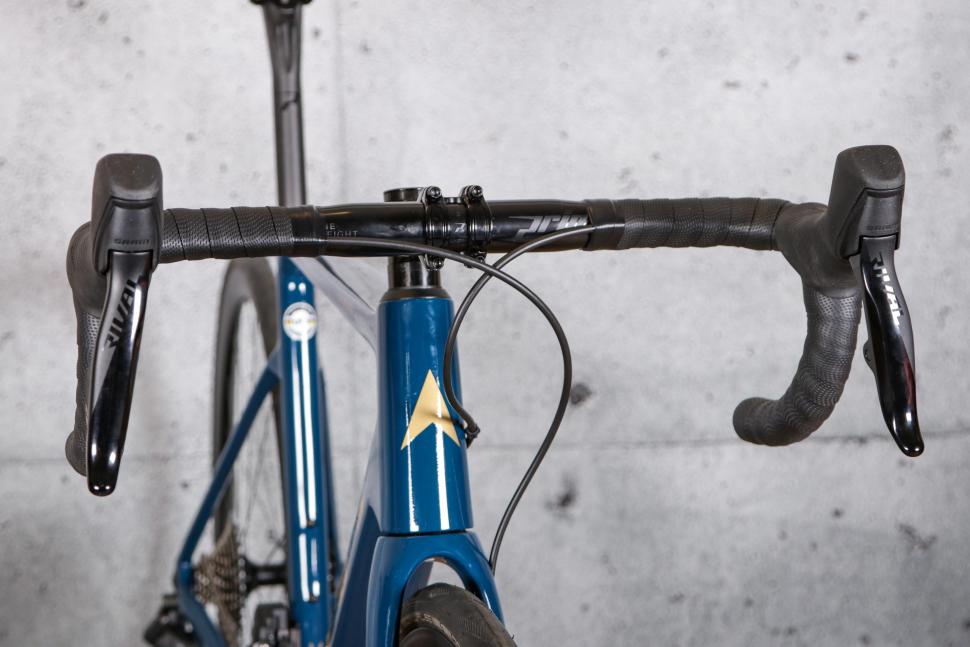

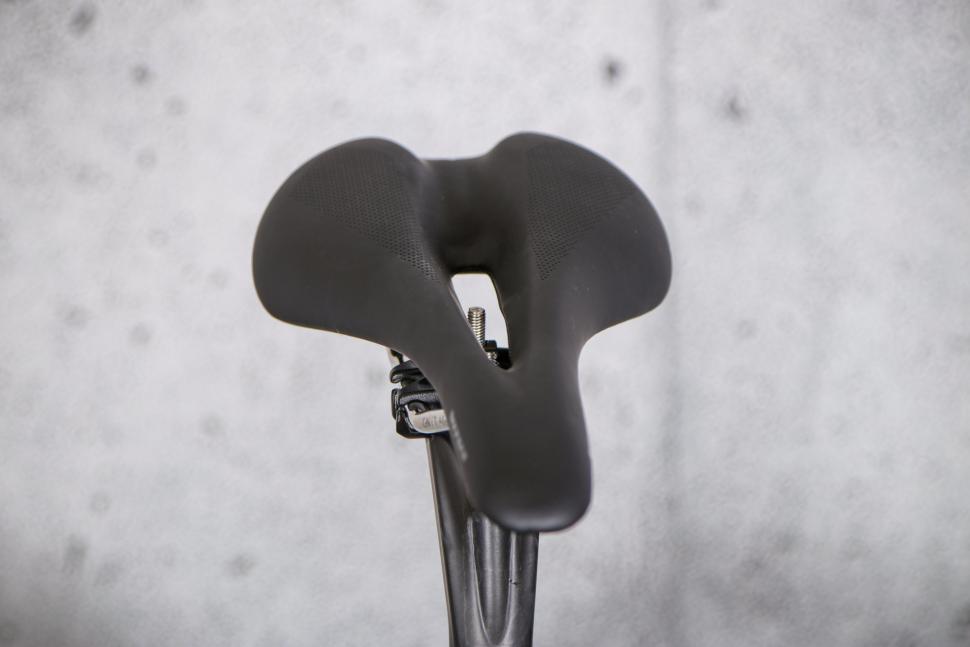

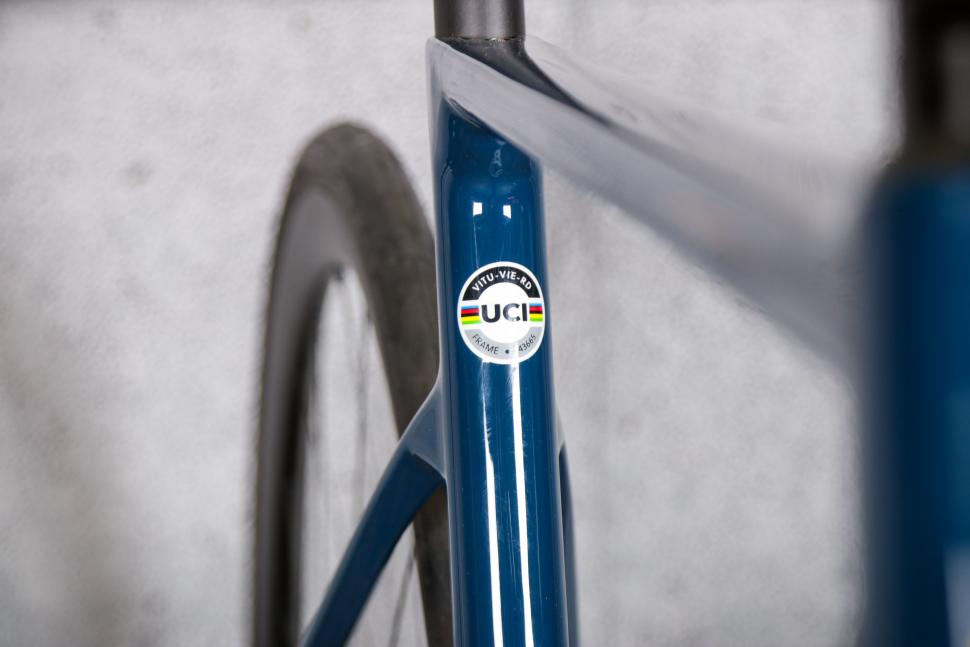

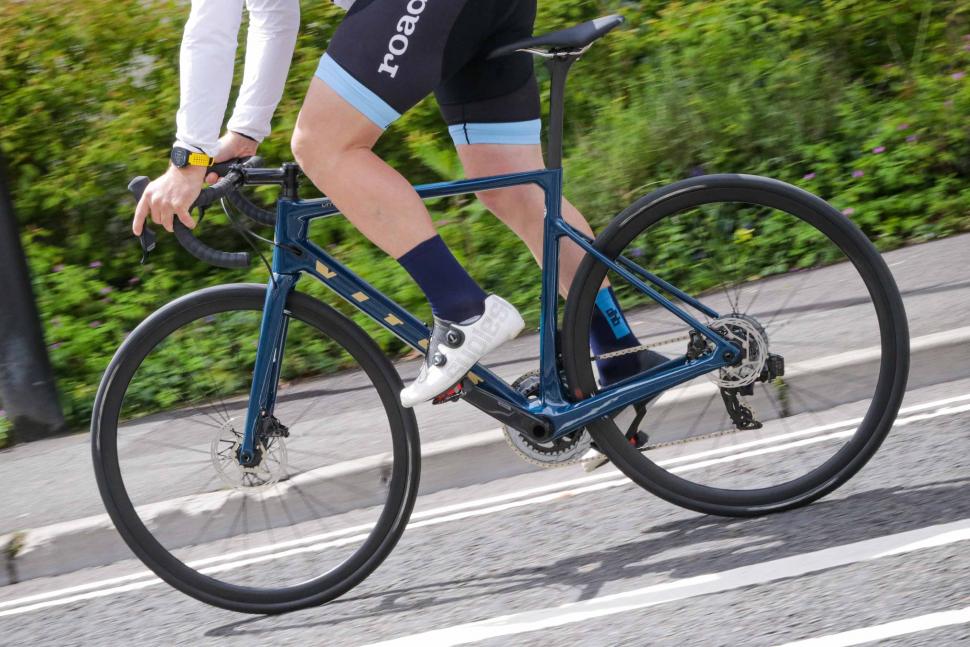


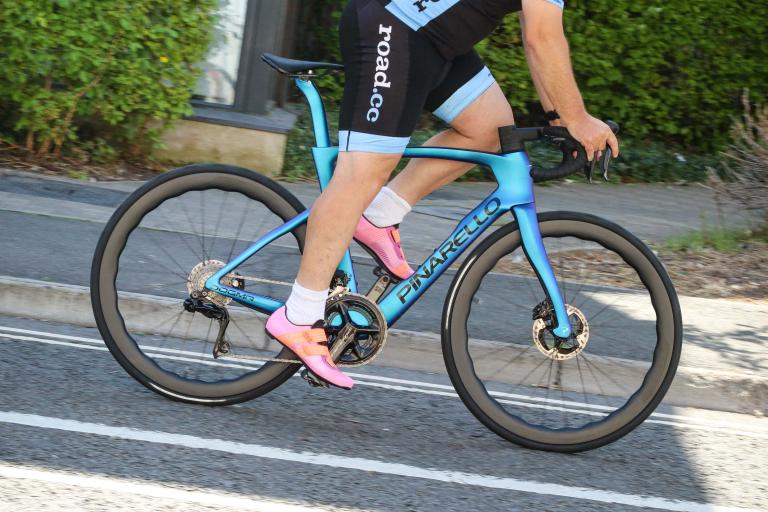

Add new comment
2 comments
Could I please ask a couple of questions?
1) are all of the frames in the 2021 Evo range made from the same carbon (and layup)? In other words, are they identical frames?
2) perhaps related, but what do the CR, CRS and CRX part of the models' names denote? I don't think it's the wheels, and can't for the life of me see (on the Vitus website) what the difference is.
Thank you.
1) From the technical documents I've seen the Vitesse Evo range uses just one frame made from Toray T800 carbon fibre with a uni-directional layup.
2) I don't know the definitive answer on this but it looks to be just the spec level. The CR tends to get alloy wheels and handlebar, whereas the CRS get Reynolds carbon wheels and a carbon handlebar. The CRX model doesn't look to get anything extra than the CRS other than the top level Sram groupset.